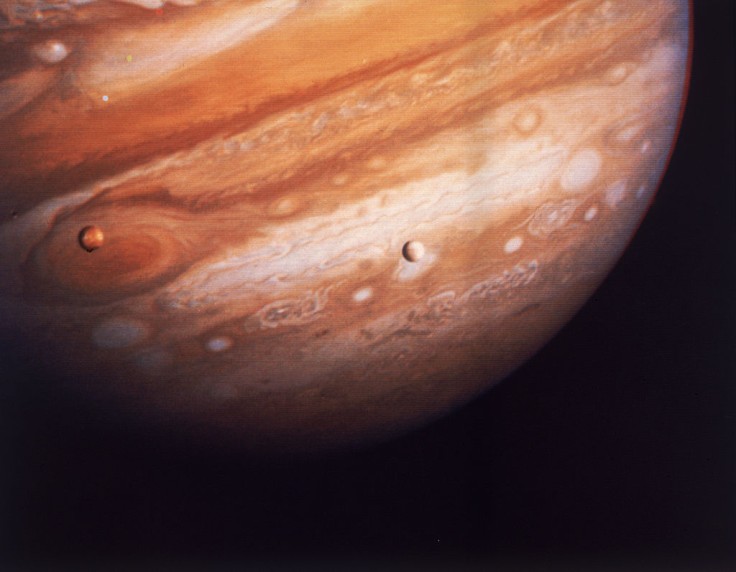
Enjoy a fantastic video of Jupiter and its largest moon Ganymede! The NASA Juno probe got a close-up view of the icy orb and the gas giant, offering a dramatic space show in full HD.
Jupiter, in particular, featured amazing colors of blue, orange, greyand white--straight out of Van Gogh's "The Starry Night."
On June 7, NASA's Juno spacecraft flew over Jupiter's moon Ganymede and explored a territory no other spacecraft has entered in over two decades. Afterward, it did its 34th flyby on Jupiter's atmosphere and traveled pole to pole in less than three hours.
The spacecraft used its JunoCam--a unique camera capable of taking pictures in a spinning direction--to capture the moment. It used a "push-frame" design and developed one image strip at a time as it passed through the field of view. The mission team rendered these images, animated them to a "starship captain" point of view, and uploaded the video on their official YouTube channel.
JunoCam Imager Captures Biggest Moon in the Solar System
According to NASA, the 3:30 minute video of Juno's adventure featured the spacecraft passing within 645 miles (1,038 kilometers) of Ganymede's surface at a relative velocity of 41,600 mph (67,000 kph). The imagery captured the moon in both its dark and light regions, with the darker areas believed to result from ice sublimating in the surrounding vacuum.
The video also captured the largest and brightest crater scar on Ganymede called "Tros."
Afterward, Juno traveled 14 hours and 50 minutes (a few seconds on the video) across the 735,000 miles (1.18 million kilometers) distance between Ganymede and Jupiter. The camera then captured the view within 2,100 miles (3,400 kilometers) above Jupiter's spectacular cloud tops.
Some notable features for Jupiter werethe circumpolar cyclones at the north of the planet. There were also eight massive storms rotating counter clockwise in the southern hemisphere that appear like white ovals, popularly referred to as the gas giant's "string of pearls."
Space exploration has reached a new, beautiful and deep level of imagery and videography. Thanks to Juno's advanced technology, researchers could animate the space experience in a way that lets people explore the solar system firsthand.
NASA Jupiter Photos and Mission Update
Juno still has a lot to offer in the coming years. Launched in 2011, Juno has the mission to unlock all of Jupiter's secrets. It studied Jupiter's atmosphere (and measured composition, temperature, cloud motions, and other similar properties).
According to JPL, "Juno is part of NASA's New Frontiers Program, which is managed at NASA's Marshall Space Flight Center in Huntsville, Alabama, for the agency's Science Mission Directorate in Washington. Lockheed Martin Space in Denver built and operates the spacecraft."
Juno has a live tracker online, where curious space explorers can interact with the spacecraft. The live tracker also shows Juno's space activities and flight patterns. More details for Juno Spacecraft online simulation tools is available in this article.









